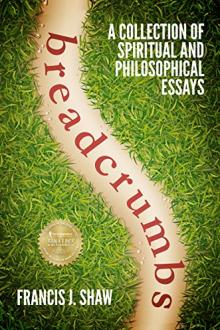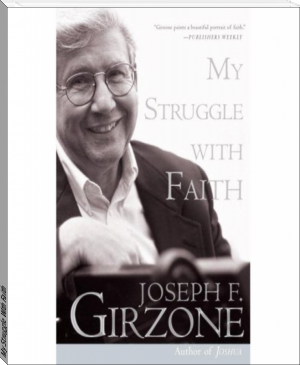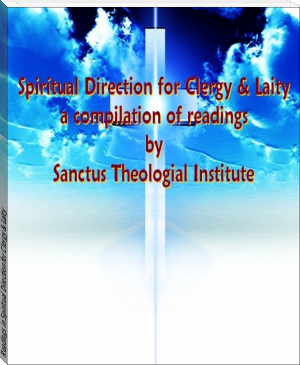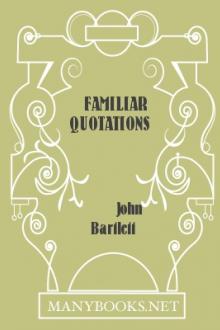Breadcrumbs: A Collection of Spiritual and Philosophical Essays by Francis J. Shaw (top 10 motivational books .txt) 📕

- Author: Francis J. Shaw
- Performer: -
Book online «Breadcrumbs: A Collection of Spiritual and Philosophical Essays by Francis J. Shaw (top 10 motivational books .txt) 📕». Author Francis J. Shaw
There is more intrigue in the details of the pictures. Our prehistoric friends were not interested in still life interpretations. Most, show animals in motion and according to a study in PLOS ONE, conducted by researchers from Eotvos University in Budapest, Hungary, the skill of the artists is incredible. Most four-legged animals move their legs in a particular sequence and our cave dwellers accurately reported the correct order 53.8% of the time. It may not sound like a great success rate, until we conduct some comparisons. Since there are many potential combinations, guessing would result in a 26.7% chance of getting the gait correct. We can conclude, they didn’t guess. Prior to 1880, great artists, including a famous horse picture by Leonardo da Vinci, yielded a mere 16.5%. In the 1880’s scientists finally pinned down the sequence and we knew for sure which leg went before the other. Despite having this information, since 1887, only 42.1% of pictures and statues report the correct movement and even museum exhibits are not immune to error, with a 58.9% success rate in natural history museums.
Our ancestors were better observers and reporters. These hairy, prehistoric humans, to whom we give little thought or intelligence, could interpret the details of galloping animals. Unlike our modern fixation with speed and connection, they understood a link we have been struggling to hold onto.
The handprints provide further intrigue. Various explanations have been suggested for their inclusion. As we used our fingers to learn counting when we were children, perhaps they used the hands and fingers they drew on the wall as an ancient calculating system. Our hands are everything. A quarter of the part of the brain responsible for controlling movement is dedicated to hand muscles. They touch, feel, and act as transmitters of our emotions. Used in Christianity to invoke the Holy Spirit during solemn occasions and sacraments, in the ancient healing art of Reiki they help to balance the energies within the body.
We might imagine the men hunted the prey and painted the great animals on cave walls, adding their signature handprints. Like many assumptions, there is evidence to suggest otherwise. It’s even a possibility that most of the handprints belonged to women, as the relative lengths of fingers are different between the sexes. Did men provide the food and women, as Shamans, the spiritual connection? We may never know, but before the written word appeared, language was born.
The journey of voice begins when a baby enters their eighth month in the womb, as their heart rate slows when their mother is speaking. It continues after birth, when they react differently when their mother reads a story compared with someone else. There is comfort, nurturing and peace in the tones of the heart, when shared with love. It may have been where it all began, as the men left to hunt; the women remained to nurture the little ones, forming the first words. As migration occurred, the era of yarns, tales and adventures traveled along. Unlike later, with words in books fought over for hundreds of years, the oral tradition offered something more magical—stories that could change with every telling, without loss of meaning and importance.
The real power of story is not in the reading, but in hearing the spoken word. When we engage our imagination and emotions, a transformation occurs within. As people scattered to far off lands and settled, I looked for other evidence they left to light our path. If they could paint more accurate pictures of animals in motion than we do today, what more might they have to share? I found it in the monuments they built—stone circles, which still mesmerize. With over 1,300 in Britain and Ireland alone, these were no whims. The most famous, Stonehenge, constructed over a 1,500-year period.
Experts continue to theorize on the their purpose: astrological guides, ancient Druidic temples, monuments to the dead? Whatever compelled the builders, constructing these sites required thousands upon thousands of hours and ancient engineering skills to transport and raise heavy stones. Without the written word, stories about these stones must have been handed down from one generation to the next—a narrative so powerful, people continued to build. Will the buildings we construct today have the same effect in a couple of thousand years? It’s doubtful; because it’s unlikely any will survive that long, because in contrast to our ancestors, we don’t build to connect.
Earlier, I described the Latin root of progress as ‘advancing or going forward,’ but after my foray with Timothy to the 19th and 20th centuries and now in prehistory, I concluded, this definition is part of the problem, because it does not accurately describe positive change. When a circular ball rolls downs hill, we can say it progresses from the top to the bottom, but when it changes to an oval as it rolls, it does something else—it transforms. From the Latin, transformare, it literally means ‘changing in shape,’ and what lies at the heart of progress is a catalyst strong enough to make the change impactful and enduring.
Passion cannot be fleeting. When it is, we stop observing and reflecting. Our efforts of quick fixes, whether they are political, financial, or economical, fade and wither—we replace and not renew. We assume it’s the hands of men who illuminate our darkness, when all along many handprints belonged to women—we continue to develop terrible weapons, but not to draw animals in motion correctly. We see GDP and view it, along with progress as wonderful upward lines stretching toward the sky, but what we have lost and need to recover is the wisdom of our ancestors. Progress is not about climbing graphs, but reaching to the heavens, by going full circle.
I am ready to get back to the present. I have a story to finish and for the first time in this journey, I realize in my search for truth and meaning, the answer has always been there, hidden in plain sight. It’s not the conclusion I imagined when I started out with Timothy and it’s not actually anything new at all. Perhaps, it is the only answer it could ever be; one which shows up everywhere—in night and day, hot and cold, sun and rain, in the seasons, light and shadow, but not in the ‘isms,’ nor in any system that focuses on purely one outcome, whether it be a spiritual, political, economic, or environmental solution. The answer is balance, or more specifically, harmony. From the Greek, harmonia, it means ‘agreement, concord of sounds,’ and the echo of it reverberates from centuries past to the present time.
Part of me is sad to be back, but energized by my journey to the distant past, I feel a clarity emerging. Of all the discoveries, it’s the workers who toiled at Stonehenge for 1,500 years, who are most on my mind. Such endurance, only possible because of connections to a story with its roots deeply imbedded in memory. We cannot afford to lose our hippocampus...to lose our way, because our ancestors are talking. They are pleading with us to reminisce, to remember the old days, when words became language; when language became song and our hearts touched the spiritual center that is the home of us all.
The light is dimming but it’s not extinguished. We see it in how people with dementia become alive again when they hear poetry or music from their childhood. Within moments, a remarkable change occurs. Freed from the bounds of degenerative conditions, faces light up, the unspoken speak, toes tap, and hands clap as the music plays or the poem is remembered. People, who barely shuffle without music, glide across the dance floor as though the conditions they have no longer exist. Memories re-established, people become who they once were and the emotions return.
It makes perfect sense. When words were first recorded into writing they were not narrative accounts, rules, or laws, but great poems, such as Gilgamesh, Beowulf, and the biblical Psalms that spoke of stories and wisdom. One oral tradition handed down from one generation to the next through poetry, because just like music, lyrics we easily remember today, poems are much easier to memorize.
This is their message, handed down to us throughout time. To see the connection of stories, song and spirit, that unites, not divides, that touches us so deeply it can only heal when it is shared. The signs are there. Today, at life’s most happy and sad moments we reach for the rhythm of our core to celebrate and mourn. At weddings, it’s joyful singing, love poems and after dinner stories, we see as the way to express our happy feelings. At funerals, poetry is increasingly used to sing the words the heart is too wounded to speak.
Those who wish to rule continue to tell a story. It’s their Royal Progress, kept alive by exploiting resources: labor, land, and assets, but the messages of our ancestors are not dead. The rhythm of life they imparted, found in those who blend the people, earth, and natural resources together in harmony. The 5,000 tribes, speaking 4,000 languages, who make up 5% of the world’s population.
They are the indigenous people—First nations, the aboriginals; most connected to the cave artists. According to a study by Gonzalo Oviedo,15 80% of the global eco-regions (areas rich in bio-diversity, is inhabited by one or more indigenous peoples). There is a correlation between bio and cultural diversity. The people and the land, where resources are shared, not owned, where community lies at the center of their circle and where the Great Spirit speaks, because they actively seek to listen.
The response of the powerful to indigenous peoples across many nations throughout history has been disastrous. Lands seized and active policies enabled to destroy every facet of ancient cultures. Their languages forbidden, customs derided, forced to accept foreign clothes, schools, and Gods. Perhaps the worst atrocities were the efforts to destroy lives by infesting goodwill offerings with disease and introducing drugs like alcohol to cause dependency. Why would powerful forces go to such an extremes to exterminate whole peoples? The value of the land is a big motivator, but some actions seemed to go beyond mere natural resource seeking and wanting land for population expansion. It’s as though they saw strength in these cultures beyond ancient ways and simple tools—societies blending body, spirit, land, in balance.
Our world has become a playground for the young, the fast and the furious, wrapped up in speed, with youthful leaders to match. Of US Presidents – John F. Kennedy, Bill Clinton, Barack Obama, three of youngest five ever at inauguration – British Prime Ministers – John Major, Tony Blair, David Cameron – also all their 40’s. Populations are aging. Will we listen to our elders, tucked away in their nursing homes? We should, not only because of their wisdom, but soon they may be the only ones who can still remember what life was like before the memories died.
The search for identity and a God to identify with will always be our path. If we are in any doubt that it’s native peoples we should be seeking to provide guidance and leadership, the commonalities in





Comments (0)